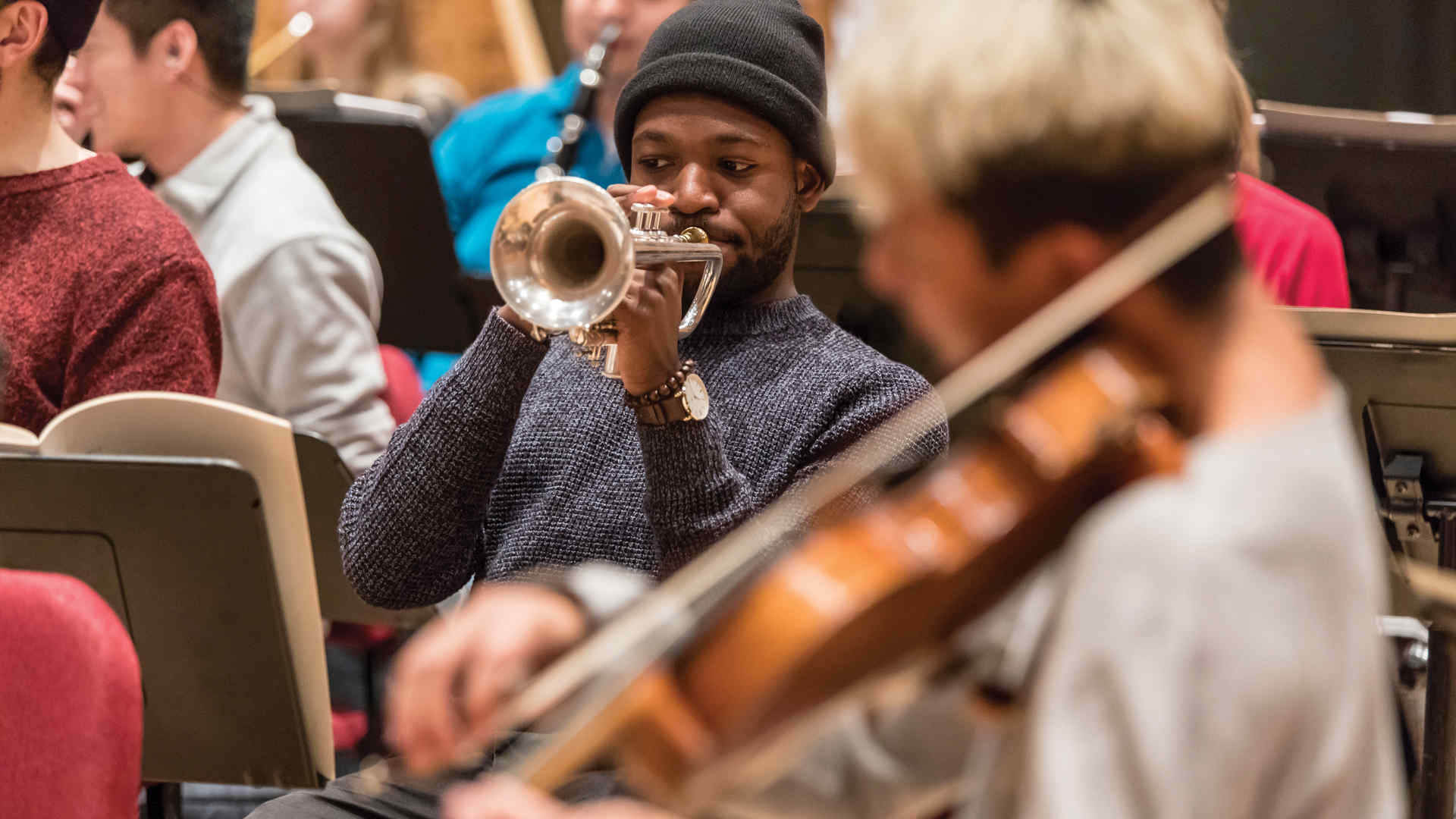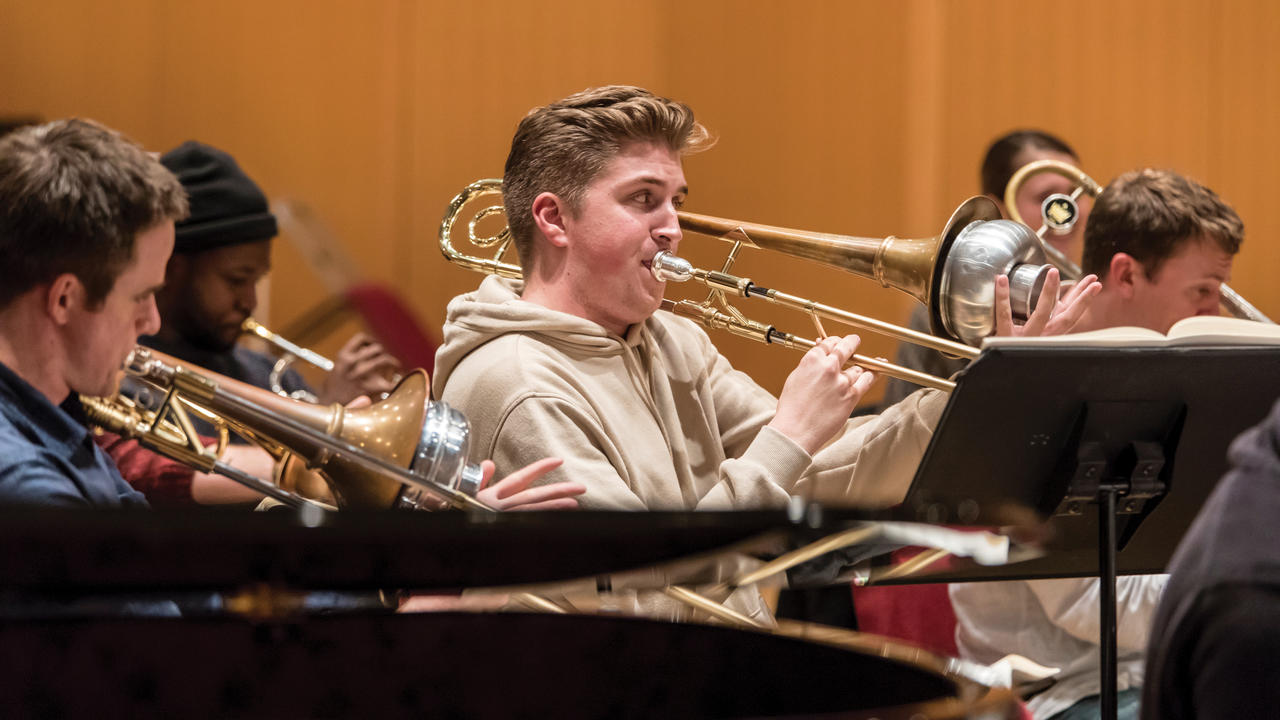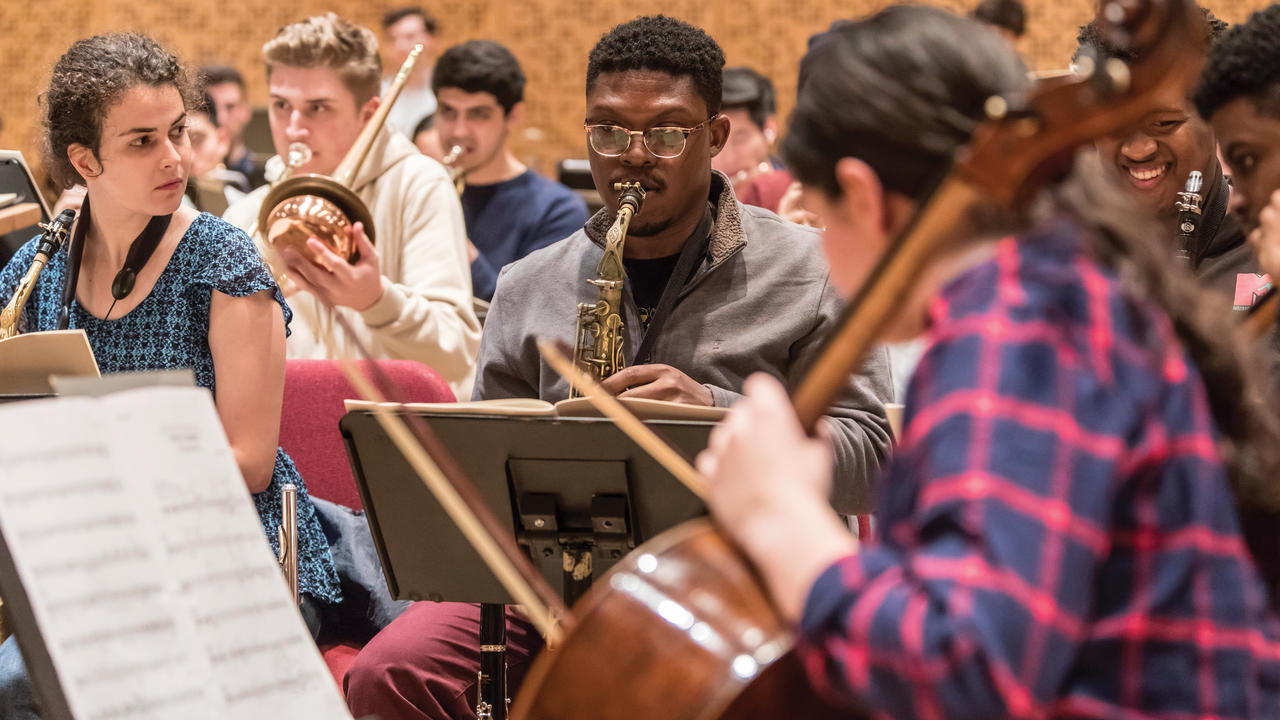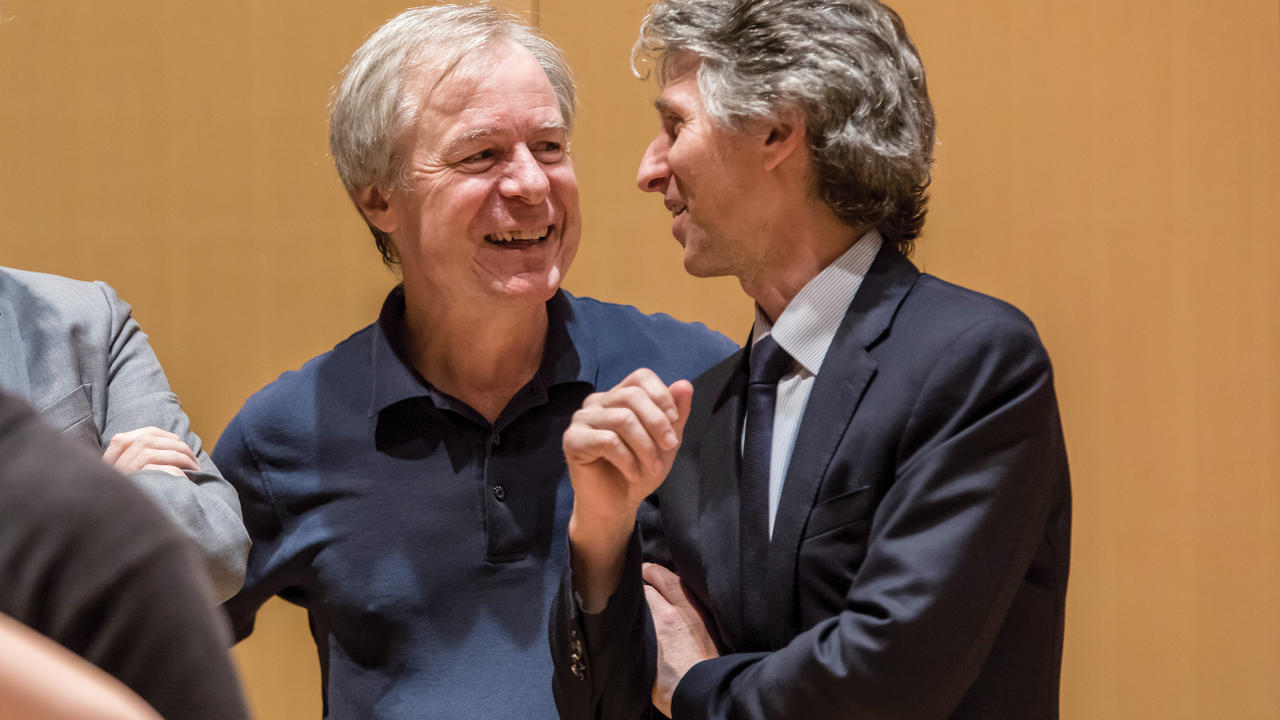
Marsalis’ Swing Symphony at Carnegie Hall
By Susan Jackson
It’s been quite a while in the making, but a remarkable collaboration takes place at Carnegie Hall on February 23, when the Juilliard Orchestra and the Juilliard Jazz Orchestra give their first-ever joint concert. The two ensembles will perform Swing Symphony by Wynton Marsalis (’81, trumpet), director of Juilliard Jazz, under the baton of David Robertson, head of conducting studies. Though the formal performance will be a first, plans reach back further. In fall 2019, Robertson led the two ensembles in a joint reading of Swing Symphony. And at the beginning of the following school year, with the pandemic in full force, he oversaw jazz and classical students in a virtual reading of the piece that premiered at Juilliard’s virtual gala.
Two students who have been involved with the project in all its Juilliard manifestations talked about it this fall with Journal editor in chief Susan Jackson. Emma Richman (BM ’21) is a first-year master’s violinist and Jacob Melsha (BM ’21, jazz studies) is a second-year master’s trombonist.
Tell us about your experiences with the Swing Symphony
Jacob: Looking back to our first reading, two years ago—I was so excited about it. I grew up in St. Louis and had worked with David Robertson in youth orchestra. To be able to play this piece with a conductor from my hometown who I’d worked with, with friends I’d grown up with, and written by the guy who’s the reason I’m at Juilliard—it’s so many roads and avenues crossing at once.
Emma: I’ve also known David Robertson for a long time—he conducted the National Youth Orchestra when I was in it. Having him be at Juilliard is very full circle for a lot of people.
And you both participated in the virtual recording too?
Emma: Yes—I recorded my first violin parts with the track in my ear—
Jacob: With blank walls behind us, no posters—
Emma: Exactly. We had to take everything off our walls. And I recorded the part over and over again. The violin part in this piece is not easy. These are jazz licks you’re playing on violin. It took a very long time to get it all, but that final project turned out super cool.
Jacob: Yeah. Especially considering we did it essentially all on iPhones! Emma, could you tell that the music was written by a jazz musician?
Emma: For sure. It has a lot of jazz rhythms and bluesy chords. I remember looking over the part for the first time, and thinking, Oh my gosh, this is a simple saxophone lick, and I can’t figure out how to play it on the violin and I’m going to sit down next to these jazz guys and say what are all these flats—
Jacob: The first time we all played together we were all so nervous—
Emma: Totally! We didn’t want to disappoint each other.

What makes it different than a regular orchestra or jazz orchestra performance?
Emma: I love that the setup isn’t the symphony orchestra on one side and the jazz orchestra on the other—it incorporates everything into one big ensemble and turns the whole orchestra into a giant jazz band. We’re all sitting together—
Jacob: I’m looking forward to that: I’m in the middle of the trombone section, with the cellos to my left and the violins to my right.
Emma: The jazz musicians get the experience of being smack dab in the middle of a symphony orchestra, and we’re in the middle of a jazz band! The novelty of being there with each other is so exciting.
Jacob: It’s the same people we’ll go to a party with, be at meals with, and who we’ve known in a social context for so long. But to walk into Room 543 and get my instrument out and sit down to play with close friends that I normally don’t have a chance to play with—
Emma: It’s awesome that it’s not a classical symphony with some jazz harmonies, and it’s not jazz vs. classical—it’s the swing symphony.
Jacob: Yeah, it’s definitely different. For one, it’s an orchestra with a jazz orchestra. You don’t usually see that instrumentation. To have one saxophone in a symphony is a rarity, let alone to have five. And to have six or seven trombones. Also, I’m used to following conductors, but usually in a jazz capacity, so the rhythm section is in control of the time. Now all of a sudden, I have to watch David Robertson to make sure I’m on time— speed up and slow down. It’s just a different sense.
Emma: For us, we’re so used to following the conductor that having that rhythmic drive right next to us rather than what you’re seeing visually was a lovely shift.
Jacob: I’m not sure if I’ll have improvised solos, but for whoever does, it will be interesting improvising standing right in front of the conductor while also listening to the rhythm section and dealing with these new classical textures.
Emma: And for us, during the solos we get to sit back and watch. To me that’s amazing, because I read the notes on the page and that’s how it works. It’s fun to have a section that says tenor sax solo and watch that person do something magnificent every single time that’s never the same. And it’s so, so cool to have that happening right next to you.

It’s pretty far in advance, but are you doing any kind of preparation now?
Jacob: I’ve been listening to it a lot coming down here on the subway playing in my headphones. I want to get it in my head.
Emma: The best prep for us at the moment is being so excited about it— we love the music so much and we’re going to be playing it together! And the fact that this is on the stage at Carnegie Hall—there’s always an extra special feel there.
Jacob: This is going to be bananas. You have the Juilliard Orchestra, which is always a treat. Playing with the Juilliard Jazz Orchestra, which has never happened before. Playing a piece that was written by Wynton Marsalis, who’s the head of the jazz program—
Emma: And this piece goes so hard—
Jacob: Plus it’s after such a long time when we couldn’t all perform together.
Emma: We were so grateful we could do any performing at all over the past year and a half, when we were broken up in tiny ensembles. But to be back with a full orchestra, with stand partners—it’s wild to me that we can have all these people on a stage again and for a public audience.
Jacob: It’s a part of Juilliard history! This is one for the books.
